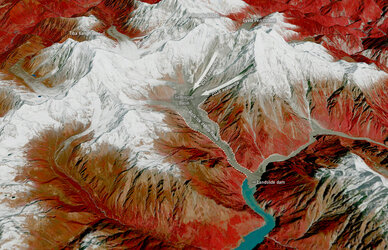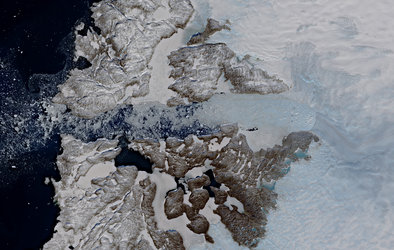Accept all cookies Accept only essential cookies See our Cookie Notice

About ESA
The European Space Agency (ESA) is Europe’s gateway to space. Its mission is to shape the development of Europe’s space capability and ensure that investment in space continues to deliver benefits to the citizens of Europe and the world.
Highlights
ESA - United space in Europe
This is ESA ESA facts Member States & Cooperating States Funding Director General Top management For Member State Delegations European vision European Space Policy ESA & EU Space Councils Responsibility & Sustainability Annual Report Calendar of meetings Corporate newsEstablishments & sites
ESA Headquarters ESA ESTEC ESA ESOC ESA ESRIN ESA EAC ESA ESAC Europe's Spaceport ESA ESEC ESA ECSAT Brussels Office Washington OfficeWorking with ESA
Business with ESA ESA Commercialisation Gateway Law at ESA Careers Cyber resilience at ESA IT at ESA Newsroom Partnerships Merchandising Licence Education Open Space Innovation Platform Integrity and Reporting Administrative Tribunal Health and SafetyMore about ESA
History ESA Historical Archives Exhibitions Publications Art & Culture ESA Merchandise Kids Diversity ESA Brand Centre ESA ChampionsLatest
Space in Member States
Find out more about space activities in our 23 Member States, and understand how ESA works together with their national agencies, institutions and organisations.
Science & Exploration
Exploring our Solar System and unlocking the secrets of the Universe
Go to topicAstronauts
Missions
Juice Euclid Webb Solar Orbiter BepiColombo Gaia ExoMars Cheops Exoplanet missions More missionsActivities
International Space Station Orion service module Gateway Concordia Caves & Pangaea BenefitsLatest
Space Safety
Protecting life and infrastructure on Earth and in orbit
Go to topicAsteroids
Asteroids and Planetary Defence Asteroid danger explained Flyeye telescope: asteroid detection Hera mission: asteroid deflection Near-Earth Object Coordination CentreSpace junk
About space debris Space debris by the numbers Space Environment Report In space refuelling, refurbishing and removingSafety from space
Clean Space ecodesign Zero Debris Technologies Space for Earth Supporting Sustainable DevelopmentLatest
Applications
Using space to benefit citizens and meet future challenges on Earth
Go to topicObserving the Earth
Observing the Earth Future EO Copernicus Meteorology Space for our climate Satellite missionsCommercialisation
ESA Commercialisation Gateway Open Space Innovation Platform Business Incubation ESA Space SolutionsLatest
Enabling & Support
Making space accessible and developing the technologies for the future
Go to topicBuilding missions
Space Engineering and Technology Test centre Laboratories Concurrent Design Facility Preparing for the future Shaping the Future Discovery and Preparation Advanced Concepts TeamSpace transportation
Space Transportation Ariane Vega Space Rider Future space transportation Boost! Europe's Spaceport Launches from Europe's Spaceport from 2012Latest
Batura Glacier, Pakistan
Thank you for liking
You have already liked this page, you can only like it once!
The Copernicus Sentinel-2 mission takes us over Batura Glacier – one of the largest and longest glaciers in the world, outside of the polar regions.
Zoom in to see this image at its full resolution or click on the circles to learn more about the features in it.
Located in the upper Hunza Valley, in the Gilgit-Baltistan region of Pakistan, the Batura Glacier is visible in the centre of the image and is approximately 57 km long. It flows from west to east and feeds the Hunza River in north Pakistan, then joins the Gilgit and Naltar Rivers before it flows into the Indus River.
The lower portions of the Batura Glacier feature a grey sea of rocks and gravelly moraine (an accumulation of rocks and sediment carried down by the glacier often caused by avalanches). The glacier has a mean ice thickness of around 150 m, with the lower parts of the glacier holding most of its mass.
This false-colour composite image uses the near-infrared channel of the Copernicus Sentinel-2 mission to highlight vegetation, which appears in red. Batura is bordered by several villages and pastures with herds of sheep, goats and cows where roses and juniper trees are quite common. In the upper-right of the image, pockets of cultivated vegetation alongside the Gilgit and Hunza rivers can be spotted.
Batura Glacier is located just north of the Batura Muztagh, a sub-range of the Karakoram mountain range, which includes the massifs of the Batura Sar, the 25th highest mountain on Earth standing at 7795 m, and Passu Sar at 7478 m.
Glacier shrinkage is a prominent sign of ongoing climate change. However, unlike many glaciers around the world, the glaciers residing in the mountain ranges in Karakoram are not responding to global warming. Their retreating is less than the global average, and in some cases, are either stable or growing. This anomalous behaviour of the region’s glaciers has been coined the ‘Karakoram Anomaly’.
Scientists typically measure the motions of glaciers with ground-based measurements. Because of the rugged terrain and challenges involved in field studies, long-term ground observational data on Karakoram is sparse. Satellites can help monitor changes in glacier mass, extents, trace area and length of glacier changes through time and derive surface velocity. Learn more about how Copernicus Sentinel-2 can help enhance glacier monitoring.
This image, captured on 13 August 2021, is also featured on the Earth from Space video programme.
-
CREDIT
contains modified Copernicus Sentinel data (2021), processed by ESA -
LICENCE
CC BY-SA 3.0 IGO or ESA Standard Licence
(content can be used under either licence)

Earth from Space: Batura Glacier

Glacier avalanches in the Sedongpu region, China

Jakobshavn Glacier, Greenland

Greenland glaciers















 Germany
Germany
 Austria
Austria
 Belgium
Belgium
 Denmark
Denmark
 Spain
Spain
 Estonia
Estonia
 Finland
Finland
 France
France
 Greece
Greece
 Hungary
Hungary
 Ireland
Ireland
 Italy
Italy
 Luxembourg
Luxembourg
 Norway
Norway
 The Netherlands
The Netherlands
 Poland
Poland
 Portugal
Portugal
 Czechia
Czechia
 Romania
Romania
 United Kingdom
United Kingdom
 Slovenia
Slovenia
 Sweden
Sweden
 Switzerland
Switzerland
























